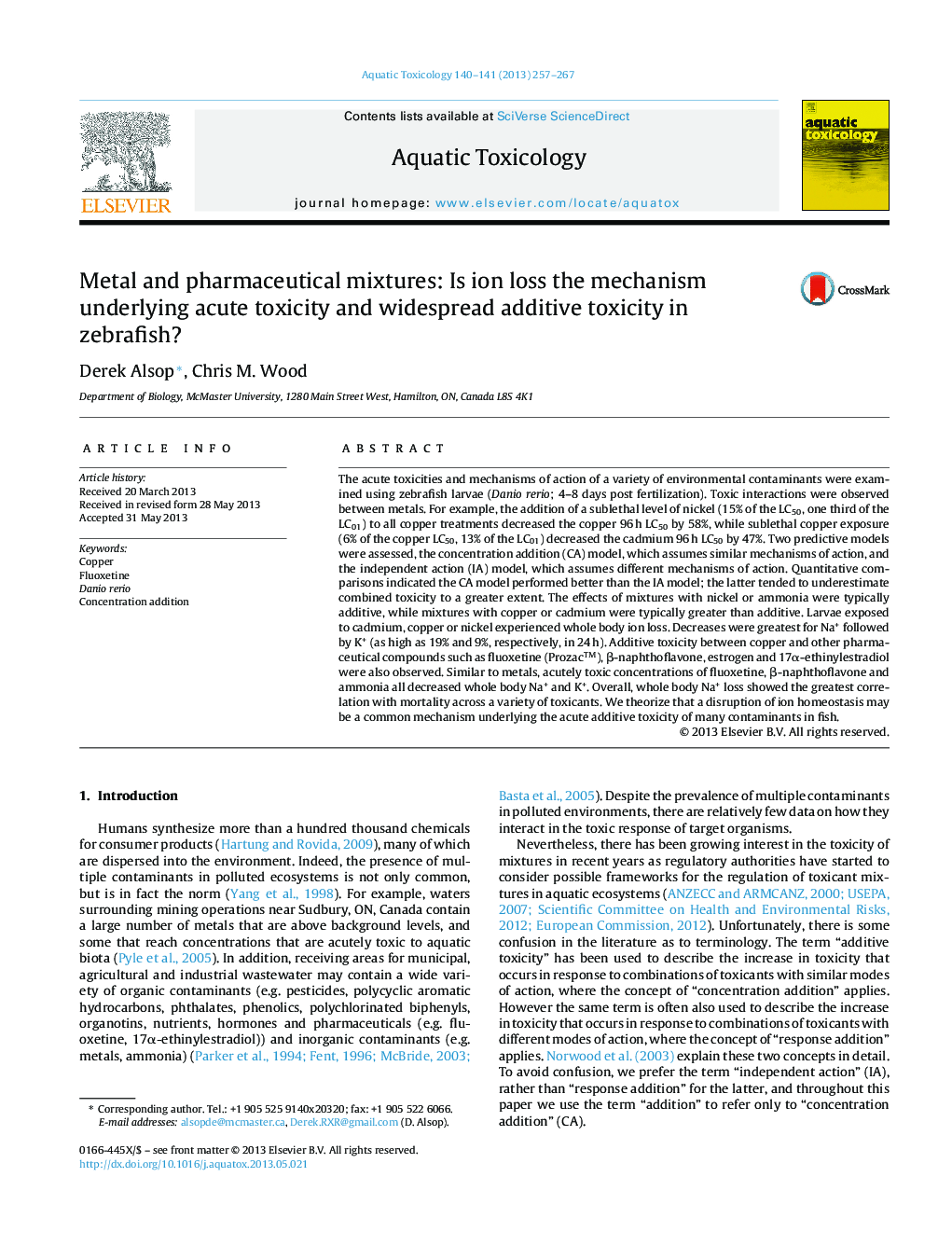| کد مقاله | کد نشریه | سال انتشار | مقاله انگلیسی | نسخه تمام متن |
|---|---|---|---|---|
| 6382530 | 1625962 | 2013 | 11 صفحه PDF | دانلود رایگان |
- Zebrafish larvae were used to test the acute toxicity of contaminant mixtures.
- Interactions were observed between metals, ammonia and pharmaceuticals.
- Larval Na+ loss was observed with exposure to all acutely toxic contaminants tested.
- Water quality criteria should recognize the toxic interactions between contaminants.
The acute toxicities and mechanisms of action of a variety of environmental contaminants were examined using zebrafish larvae (Danio rerio; 4-8 days post fertilization). Toxic interactions were observed between metals. For example, the addition of a sublethal level of nickel (15% of the LC50, one third of the LC01) to all copper treatments decreased the copper 96 h LC50 by 58%, while sublethal copper exposure (6% of the copper LC50, 13% of the LC01) decreased the cadmium 96 h LC50 by 47%. Two predictive models were assessed, the concentration addition (CA) model, which assumes similar mechanisms of action, and the independent action (IA) model, which assumes different mechanisms of action. Quantitative comparisons indicated the CA model performed better than the IA model; the latter tended to underestimate combined toxicity to a greater extent. The effects of mixtures with nickel or ammonia were typically additive, while mixtures with copper or cadmium were typically greater than additive. Larvae exposed to cadmium, copper or nickel experienced whole body ion loss. Decreases were greatest for Na+ followed by K+ (as high as 19% and 9%, respectively, in 24 h). Additive toxicity between copper and other pharmaceutical compounds such as fluoxetine (Prozacâ¢), β-naphthoflavone, estrogen and 17α-ethinylestradiol were also observed. Similar to metals, acutely toxic concentrations of fluoxetine, β-naphthoflavone and ammonia all decreased whole body Na+ and K+. Overall, whole body Na+ loss showed the greatest correlation with mortality across a variety of toxicants. We theorize that a disruption of ion homeostasis may be a common mechanism underlying the acute additive toxicity of many contaminants in fish.
Journal: Aquatic Toxicology - Volumes 140â141, 15 September 2013, Pages 257-267
